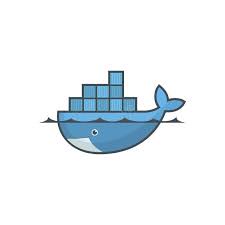Hey there, tech-savvy folks! Today, we're diving into the wonderful world of Docker Compose, the superhero sidekick in the land of containers. If you've ever wondered how to orchestrate multiple containers like a pro, you're in the right place. Let's unravel the magic of Docker Compose and see how it makes managing multi-container applications a breeze.
🎩 What's the Docker Compose Magic Trick?
Imagine you have an app with multiple parts - say, a web app, a database, and a caching service. Each part lives in its cozy container, but they need to talk to each other like good buddies. This is where Docker Compose enters the scene.
Docker Compose is like a conductor for your container orchestra. It's a tool that lets you define, manage, and run multi-container applications. You create a configuration file (usually called docker-compose.yml) that spells out how your containers should behave and interact. Then, with a simple command, Docker Compose brings them all to life.
🛠️ Setting Up the Magic Show
Before we jump into the magic, you need to set up your Docker Compose environment. If you haven't already, install Docker and Docker Compose on your system. Once that's done, you're ready to rock!
🪄 Writing the Compose File
Now, here's where the magic happens. You write a docker-compose.yml file that describes your app's structure. In this file, you specify:
-
Services: Each container is a service. You name them and define what image they use. For instance, you might have a service named
webthat uses themy-web-appimage. -
Ports: You can map ports from your container to your host machine, so you can access your app in a web browser, for example.
-
Volumes: Specify any volumes your containers need for storing data. It's like giving them a shared folder.
-
Dependencies: Declare dependencies between services. For example, you might say that the
webservice depends on thedatabaseservice. -
Environment Variables: Pass environment variables to your containers to configure them.
🪄 Running the Magic Show
Once your docker-compose.yml file is ready, it's showtime! Open your terminal and navigate to the folder with your file. Now, run:
docker-compose up
Watch as Docker Compose starts each container, sets up networking, and gets them chatting like old friends. You'll see logs from each service streaming into your terminal.
🪄 The Cleanup Act
When you're done with the magic show, press Ctrl + C in your terminal. Docker Compose will gracefully shut down your containers and clean up after itself. If you want to wipe the slate clean entirely, use:
docker-compose down
🪄 Bonus: Scaling the Magic
Want more magic? You can scale services easily with Docker Compose. For instance, if you need five instances of your web service, run:
docker-compose up --scale web=5
🧙 That's a Wrap!
And there you have it, the magic of Docker Compose! With just a simple YAML file and a few commands, you can orchestrate complex multi-container applications like a seasoned pro. No more pulling your hair out trying to make containers talk to each other - Docker Compose has got your back. So, go ahead, create your multi-container masterpiece and let the magic flow! 🎩✨


No comments yet